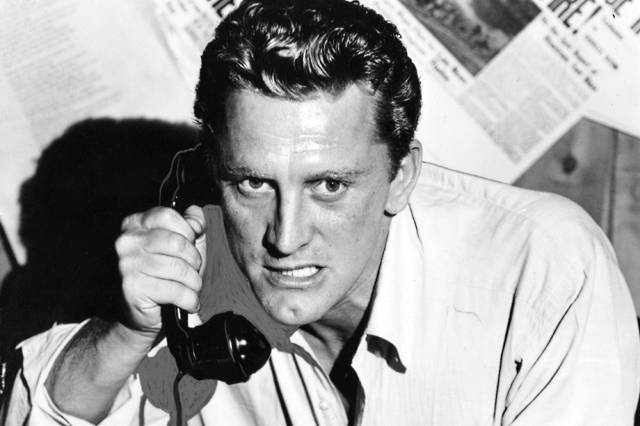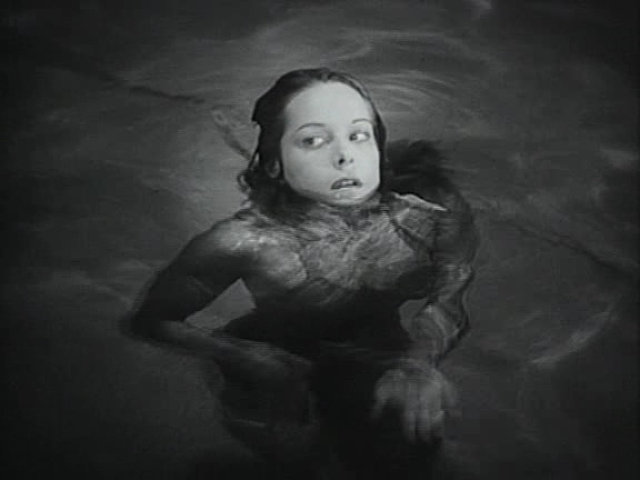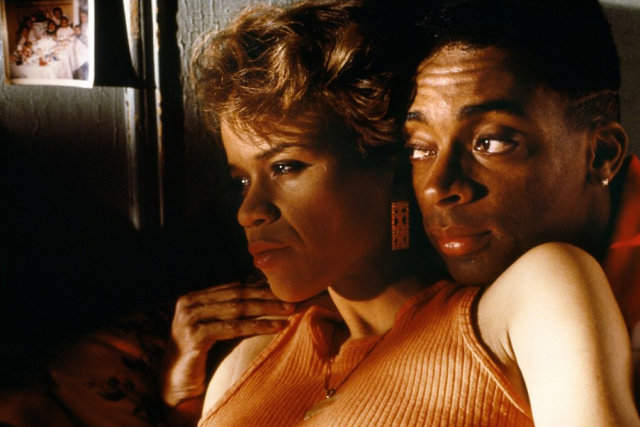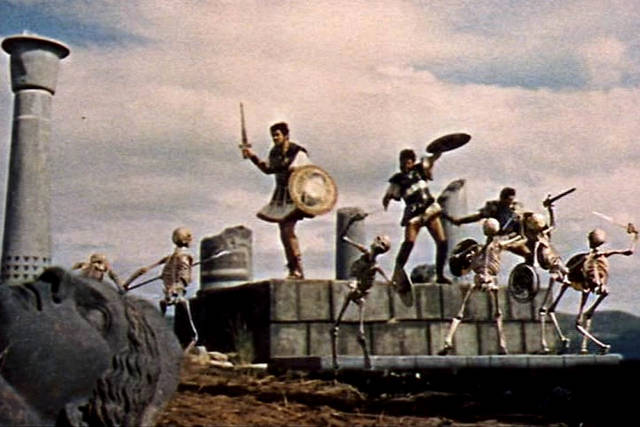Interviewing Martin Scorsese is like taking a master class in film. Fast Company’s four-hour interview with the director for the December-January cover story was ostensibly about his career, and how he had been able to stay so creative through years of battling studios. But the Hugo director punctuated everything he said with references to movies: 85 of them, in fact, all listed below.
Some of the movies he discussed (note: the descriptions for these are below in quotes, denoting his own words). Others he just mentioned (noted below with short plot descriptions and no quotes). But the cumulative total reflects a life lived entirely within the confines of movie making, from his days as a young asthmatic child watching a tiny screen in Queens, New York to today, when Scorsese is as productive as he’s ever been in his career—and more revered than ever by the industry that once regarded him as a troublesome outsider. Hugo leads the Academy Award nominations with 11 nods, including Best Picture and Best Director. Several Oscar pundits believe he’ll nab his second Directing win. If so, he owes a lot to movies like the ones below.

Ace in the Hole: "This Billy Wilder film was so tough and brutal in its cynicism that it died a sudden death at the box office, and they re-released it under the title Big Carnival, which didn’t help. Chuck Tatum is a reporter who’s very modern—he’ll do anything to get the story, to make up the story! He risks not only his reputation, but also the life of this guy who’s trapped in the mine." 1951
All That Heaven Allows: In this Douglas Sirk melodrama, Rock Hudson plays a gardener who falls in love with a society widow played by Jane Wyman. Scandale! 1955
America, America: Drawn directly from director Elia Kazan’s family history, this film offers a passionate, intense view of the challenges faced by Greek immigrants at the end of the 19th century. 1963
An American in Paris: This Vincente Minnelli film, with Gene Kelly, picked up the idea of stopping within a film for a dance from The Red Shoes. 1951
Apocalypse Now: This Francis Ford Coppola masterpiece is from a period when directors like Brian DePalma, John Milius, Paul Schrader, Scorsese and others had great freedom—freedom that they then lost. 1979
Arsenic and Old Lace: Scorsese is a big fan of many Frank Capra movies, and this Cary Grant vehicle is one of several that he’s enjoyed with his family at his office screening room. 1944
The Bad and the Beautiful: Vincente Minnelli directed this film about a cynical Hollywood mogul trying to make a comeback. It stars Kirk Douglas, Lana Turner, Walter Pidgeon, and dikk Powell. 1952
The Band Wagon: “It’s my favorite of the Vincente Minnelli musicals. I love the storyline that combines Faust and a musical comedy, and the disaster that results. Tony Hunter, the lead character played by Fred Astaire, is a former vaudeville dancer whose time has passed, and who’s trying to make it on Broadway, which is a very different medium of course. By the time the movie was made, the popularity of the Astaire/Rogers films had waned, raising the question of what are you going to do with Fred Astaire in Technicolor? So, really, Tony Hunter is Fred Astaire—his whole reputation is on the line, and so was Fred Astaire’s.” 1953
Born on the Fourth of July: Produced by Universal Pictures under Tom Pollock and Casey Silver, this Tom Cruise movie (directed by Oliver Stone) was an example of how that studio “wanted to make special pictures,” says Scorsese. 1989
Cape Fear: As he once explained to Steven Spielberg over dinner in Tribeca, one of Scorsese’s fears about directing a remake of this film was that, “The original was so good. I mean, you’ve got Gregory Peck, Robert Mitchum, Polly Bergen, it’s terrific!” 1962

Cat People: Simone Simon plays a woman who fears that she might turn into a panther and kill. It sounds corny, but the psychological thrills that directors Jacques Tourneur got out of his measly $150,000 budget make this a fascinating movie, with amazing lighting. 1942
Caught: “There are certain styles I had trouble with at first, like some of Max Ophuls’ films. It took me till I was into my thirties to get The Earrings of Madame de…, for example. But I didn’t have trouble with this one, which I saw in a theater and which is kind of based on Howard Hughes [protagonist of The Aviator].” 1949
Citizen Kane: “Orson Welles was a force of nature, who just came in and wiped the slate clean. And Citizen Kane is the greatest risk-taking of all time in film. I don’t think anything had even seen anything quite like it. The photography was also unlike anything we’d seen. The odd coldness of the filmmaker towards the character reflects his own egomania and power, and yet a powerful empathy for all of them—it’s very interesting. It still holds up, and it’s still shocking. It takes storytelling and throws it up in the air.” 1941
The Conversation: Gene Hackman stars in this thrilled directed by Scorsese’s friend, Francis Ford Coppola. It’s a classic example of studio risk-taking in the early 1970s. 1974
Dial M for Murder: When discussing the creation of Hugo, Scorsese referred to this Hitchcock film as an example of other directors who have tangled with 3-D over the years. In its original release most theaters only showed it in 2-D; now the 3-D version pops up in theaters from time to time.1954
Some of the movies he discussed (note: the descriptions for these are below in quotes, denoting his own words). Others he just mentioned (noted below with short plot descriptions and no quotes). But the cumulative total reflects a life lived entirely within the confines of movie making, from his days as a young asthmatic child watching a tiny screen in Queens, New York to today, when Scorsese is as productive as he’s ever been in his career—and more revered than ever by the industry that once regarded him as a troublesome outsider. Hugo leads the Academy Award nominations with 11 nods, including Best Picture and Best Director. Several Oscar pundits believe he’ll nab his second Directing win. If so, he owes a lot to movies like the ones below.

Ace in the Hole: "This Billy Wilder film was so tough and brutal in its cynicism that it died a sudden death at the box office, and they re-released it under the title Big Carnival, which didn’t help. Chuck Tatum is a reporter who’s very modern—he’ll do anything to get the story, to make up the story! He risks not only his reputation, but also the life of this guy who’s trapped in the mine." 1951
All That Heaven Allows: In this Douglas Sirk melodrama, Rock Hudson plays a gardener who falls in love with a society widow played by Jane Wyman. Scandale! 1955
America, America: Drawn directly from director Elia Kazan’s family history, this film offers a passionate, intense view of the challenges faced by Greek immigrants at the end of the 19th century. 1963
An American in Paris: This Vincente Minnelli film, with Gene Kelly, picked up the idea of stopping within a film for a dance from The Red Shoes. 1951
Apocalypse Now: This Francis Ford Coppola masterpiece is from a period when directors like Brian DePalma, John Milius, Paul Schrader, Scorsese and others had great freedom—freedom that they then lost. 1979
Arsenic and Old Lace: Scorsese is a big fan of many Frank Capra movies, and this Cary Grant vehicle is one of several that he’s enjoyed with his family at his office screening room. 1944
The Bad and the Beautiful: Vincente Minnelli directed this film about a cynical Hollywood mogul trying to make a comeback. It stars Kirk Douglas, Lana Turner, Walter Pidgeon, and dikk Powell. 1952
The Band Wagon: “It’s my favorite of the Vincente Minnelli musicals. I love the storyline that combines Faust and a musical comedy, and the disaster that results. Tony Hunter, the lead character played by Fred Astaire, is a former vaudeville dancer whose time has passed, and who’s trying to make it on Broadway, which is a very different medium of course. By the time the movie was made, the popularity of the Astaire/Rogers films had waned, raising the question of what are you going to do with Fred Astaire in Technicolor? So, really, Tony Hunter is Fred Astaire—his whole reputation is on the line, and so was Fred Astaire’s.” 1953
Born on the Fourth of July: Produced by Universal Pictures under Tom Pollock and Casey Silver, this Tom Cruise movie (directed by Oliver Stone) was an example of how that studio “wanted to make special pictures,” says Scorsese. 1989
Cape Fear: As he once explained to Steven Spielberg over dinner in Tribeca, one of Scorsese’s fears about directing a remake of this film was that, “The original was so good. I mean, you’ve got Gregory Peck, Robert Mitchum, Polly Bergen, it’s terrific!” 1962

Cat People: Simone Simon plays a woman who fears that she might turn into a panther and kill. It sounds corny, but the psychological thrills that directors Jacques Tourneur got out of his measly $150,000 budget make this a fascinating movie, with amazing lighting. 1942
Caught: “There are certain styles I had trouble with at first, like some of Max Ophuls’ films. It took me till I was into my thirties to get The Earrings of Madame de…, for example. But I didn’t have trouble with this one, which I saw in a theater and which is kind of based on Howard Hughes [protagonist of The Aviator].” 1949
Citizen Kane: “Orson Welles was a force of nature, who just came in and wiped the slate clean. And Citizen Kane is the greatest risk-taking of all time in film. I don’t think anything had even seen anything quite like it. The photography was also unlike anything we’d seen. The odd coldness of the filmmaker towards the character reflects his own egomania and power, and yet a powerful empathy for all of them—it’s very interesting. It still holds up, and it’s still shocking. It takes storytelling and throws it up in the air.” 1941
The Conversation: Gene Hackman stars in this thrilled directed by Scorsese’s friend, Francis Ford Coppola. It’s a classic example of studio risk-taking in the early 1970s. 1974
Dial M for Murder: When discussing the creation of Hugo, Scorsese referred to this Hitchcock film as an example of other directors who have tangled with 3-D over the years. In its original release most theaters only showed it in 2-D; now the 3-D version pops up in theaters from time to time.1954






